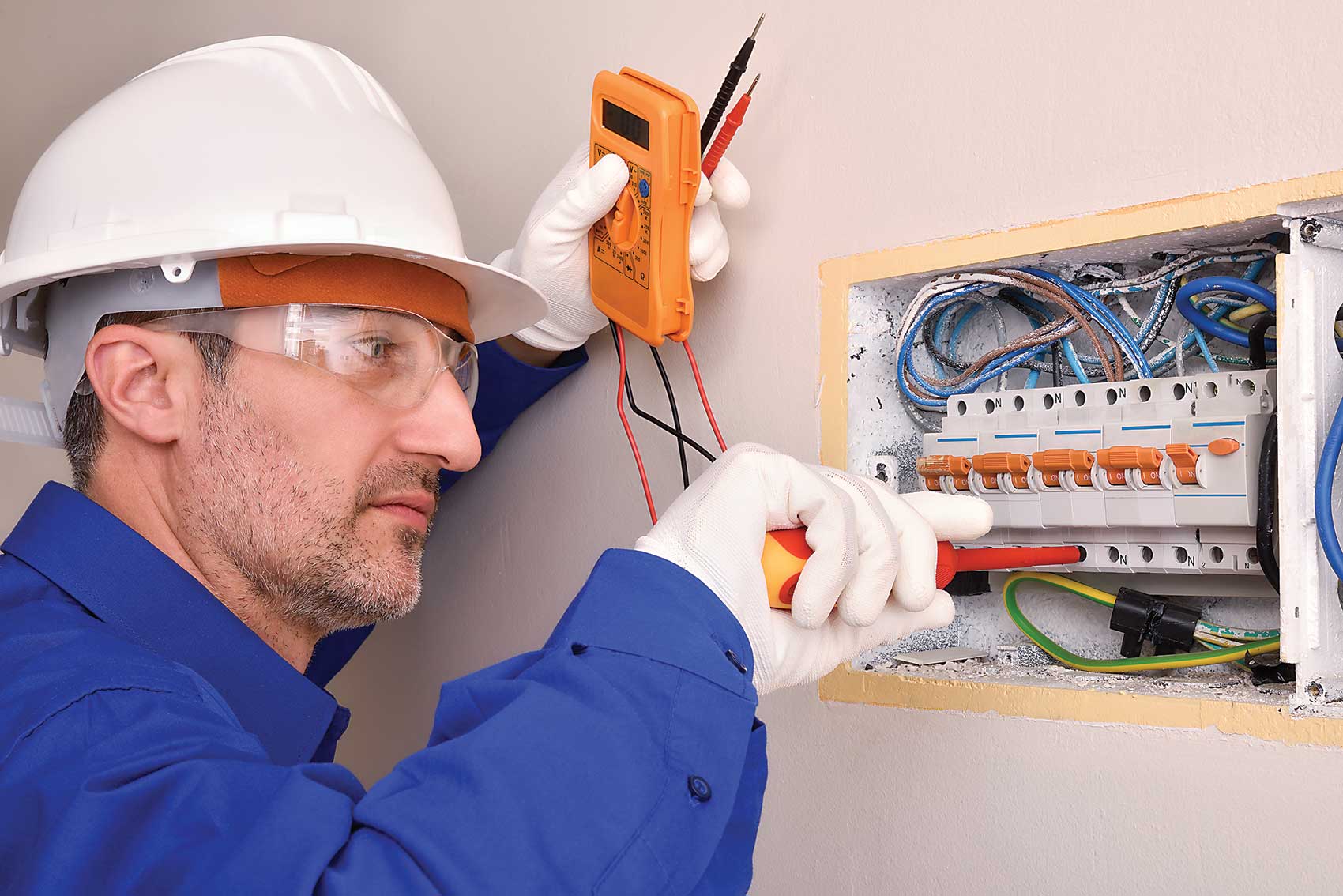Electrical safety is something that affects all of us in the electrical world. It is a topic that spans from basic electric system design to complex risk assessments and incident energy analysis studies. No matter the role we play, from electricians to engineers to inspectors, keeping the world safe from the hazards that electricity presents is at the heart of what we do. As we honor National Electrical Safety Month this May, it’s a reminder that the same level of commitment to safety from electrical hazards is important every day. After all, lives are depending on our commitment to safety at work and home.
Let’s explore the various sides of the electrical safety conversation. First, there is the protection of people who interact with and use electricity. This is generally addressed in the installation code, NFPA 70®, National Electrical Code® (NEC®). Here you can find requirements for ground-fault circuit interrupter (GFCI) to prevent electrocutions and arc-fault circuit-interrupter (AFCI) to reduce the possible fire ignition hazard. In recent additions, we have started to see requirements for worker safety through system design, as is the case in the arc-energy reduction requirements for large overcurrent devices. We also have rules for grounding and bonding, overcurrent protection, and warning labels. All of these requirements are geared towards the purpose of the NEC: the practical safeguarding of persons and property from the hazards arising from the use of electricity. It doesn’t get much more safety-oriented than that.
Secondly, we must also talk about the protection of those of us who interact with electrical equipment beyond the regular use, those who service, troubleshoot, and maintain the equipment in our lives. Electricians, HVAC technicians, and facility maintenance staff all interact a little more extensively with electrical equipment than the general public. Therefore, the safety of these people goes beyond the installation code to specific work practices and procedures that can be found in NFPA 70E®, Standard for Electrical Safety in the Workplace®: identifying the hazards that workers will be exposed to, processes for eliminating or reducing the risk to the workers, and the training that employers must provide for employees who will be exposed to this kind of work.
In honor of Electrical Safety Month, let’s explore the relationship between these two documents and the process of applying the safety-related work practices that are needed to keep our workers safe.
NFPA 70E provides a practical, safe working environment and is based on the idea that the electrical system was properly installed, something that effective code enforcement helps ensure. A great example of this is the normal operation of equipment, which depends on the equipment having been properly installed. If the equipment has not been properly installed, there’s no assurance that when the equipment is used as intended, the risk to the worker is sufficiently low enough to allow the operation.
Another example of where proper installation comes into play is whether or not the equipment will function as needed. Where this comes into play is in the estimation of what level of arc-flash energy a worker will be exposed to during an arc-flash incident. The incident energy, or how much energy is released during an arc-flash, is really dependent on two components: how much current will be flowing in an arc and how long will it be allowed to flow. There are rules in the installation code that require devices to interrupt the circuit under load, such as overcurrent protective devices, to have an interrupting rating that exceeds the available fault current. The actual arcing current will be less than the available fault current, and the overcurrent protection device (OCPD) will be able to interrupt the amount of current flowing during an arc. What would happen if this wasn’t the case? What if at the time of installation, the available fault current was around 9kA? The NEC would allow 10kA rated circuit breakers to be installed as they would still be able to open under any amount of fault current that the system could supply. However, utility companies replace transformers all the time to reduce impedance and increase efficiency. Now the available fault current goes through the roof, well above the 10kA that the OCPD is rated for. If the arcing current is also above 10kA, there is no assurance that the device will be able to open the fault at all. This will lead to an unknown value of incident energy and a situation that is unsafe to perform work.
While we can’t stop the utility from doing their work, we can give workers the information needed to determine if the numbers still apply. The NEC requires the date the available fault-current was calculated to be marked on the label when this label is required. This helps verify that the supply transformer is the one that the calculation was based on. If not, then new calculations must be made, and these new labels applied to the equipment.
This is just the start. There is a process to follow once we take that information into NFPA 70E, which will apply to those doing justified energized work such as troubleshooting or work where de-energization might create a greater hazard. Additionally, the priority of NFPA 70E is to place equipment in an electrically safe work condition – the hazard still exists until it has been verified it has not. So, even if the policy is never to do energized work, we must protect our employees during the process of verifying the absence of voltage on the circuit. This means a shock risk assessment and arc-flash risk assessment must be performed to mitigate the hazards to the employees doing this task. For the purpose of this discussion, we’ll focus on the personal protective equipment (PPE) Category method of determining the level of PPE to reduce the risk to employees. For equipment that has had an incident energy analysis performed, labels will have the PPE rating. However, if an incident energy analysis has not been performed, the PPE Category method might be able to be used. This method does take some work on the part of the employee and using information required by the NEC. Let’s take a look at what that process might look like:
A service technician arrives on-site to replace a bucket in a motor control center (MCC) that is no longer functioning. There is no justification for keeping the MCC energized throughout this process, and so the tech must place the MCC in an electrically safe work condition. This requires that all sources of power to the MCC are identified, the load is properly shut off, the MCC feeder disconnecting means is opened and locked out in accordance with lockout/ tag-out procedures. The last step is to verify de-energization, but the technician will need to be within the arc-flash boundary to perform this test. The only information available is the available fault current at the service disconnect. To determine the proper arc-flash PPE category, we need to know two parameters about the OCPD that is protecting the feeder supplying the MCC. We need the available fault-current at that device and clearing time for that amount of current. If the available fault-current is only marked at the service equipment, there are apps and calculators available to help with the rest. Once our technician has calculated this value at the MCC feeder OCPD, a time-current curve provided from the manufacturer of the OCPD can be used to determine the tripping time at that current level. This step is critical to verify that the tables can even be applied to the equipment in question. If either of the values are outside of the parameters given in the tables, a different approach is required. For our example, let’s assume the values calculated are under 65 kA of fault-current and a tripping speed faster than two cycles. So, in this case, NFPA 70E Table 130.7(C)(15)(a) applies and puts our tech in PPE Category 2 for the purpose of performing this absence of voltage test. Once the equipment has been verified to be in a safe de-energized state, PPE is no longer needed.
The safety of our “technician” in this example was dependent on many requirements that are found in the installation code and not in the safe work practices standard. Without the requirements from the NEC, such as a disconnect capable of being locked open, the available fault-current being marked on the service equipment, or overcurrent protective devices with interrupting ratings that are capable of opening the available fault-current, our technician could have been seriously injured or killed.
Electrical safety is a combination of proper installation, proper maintenance, and safe work practices. Take away any one of these, and workers are at risk of becoming yet another tragic story or recorded casualty.
If you found this article helpful, subscribe to the NFPA Network Newsletter (nfpa.org/nfpanetwork) for monthly, personalized content related to the world of fire, electrical, and building & life safety.












Find Us on Socials